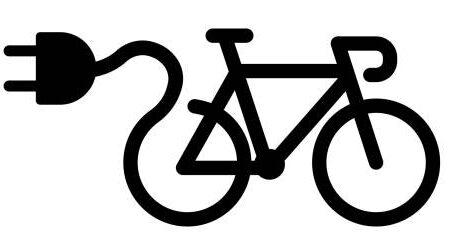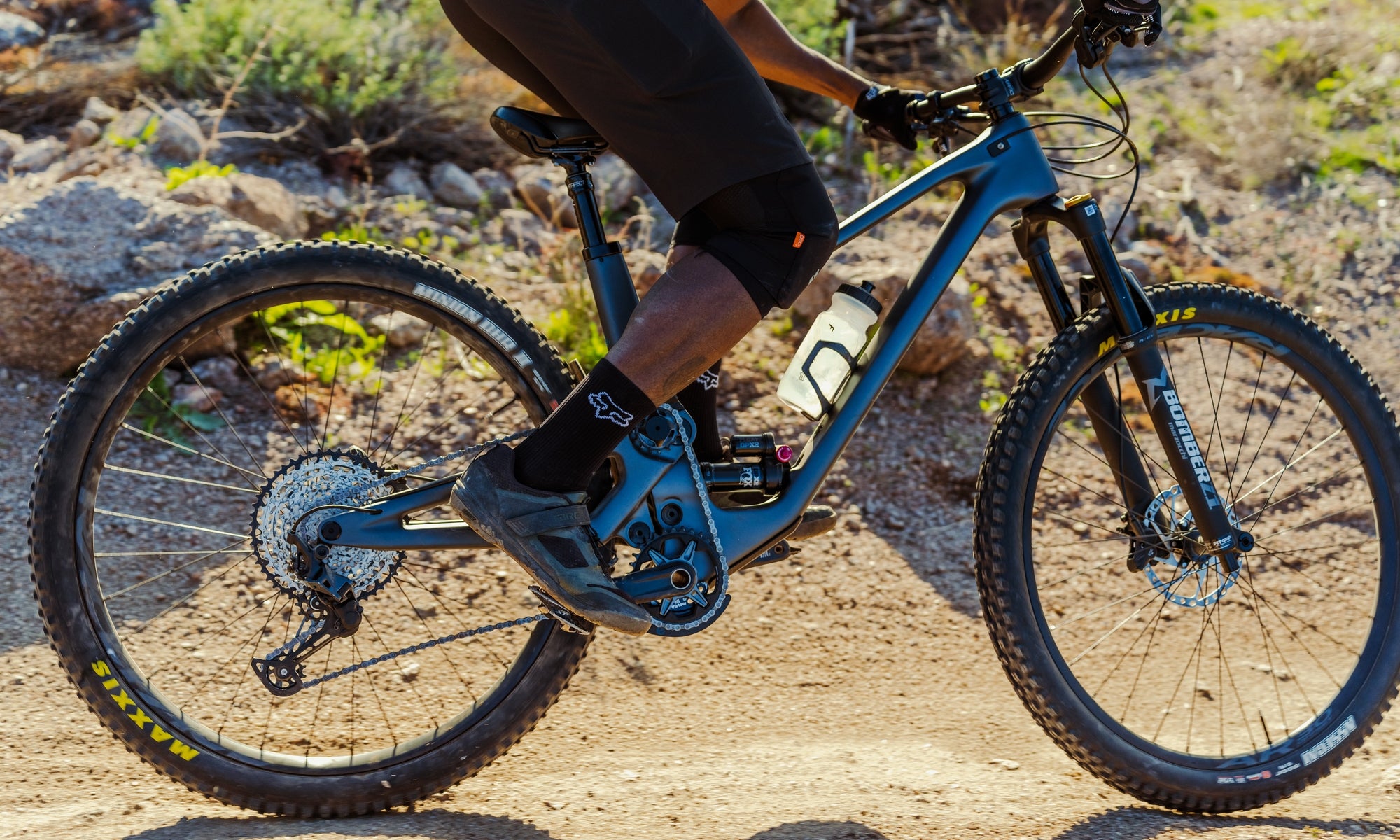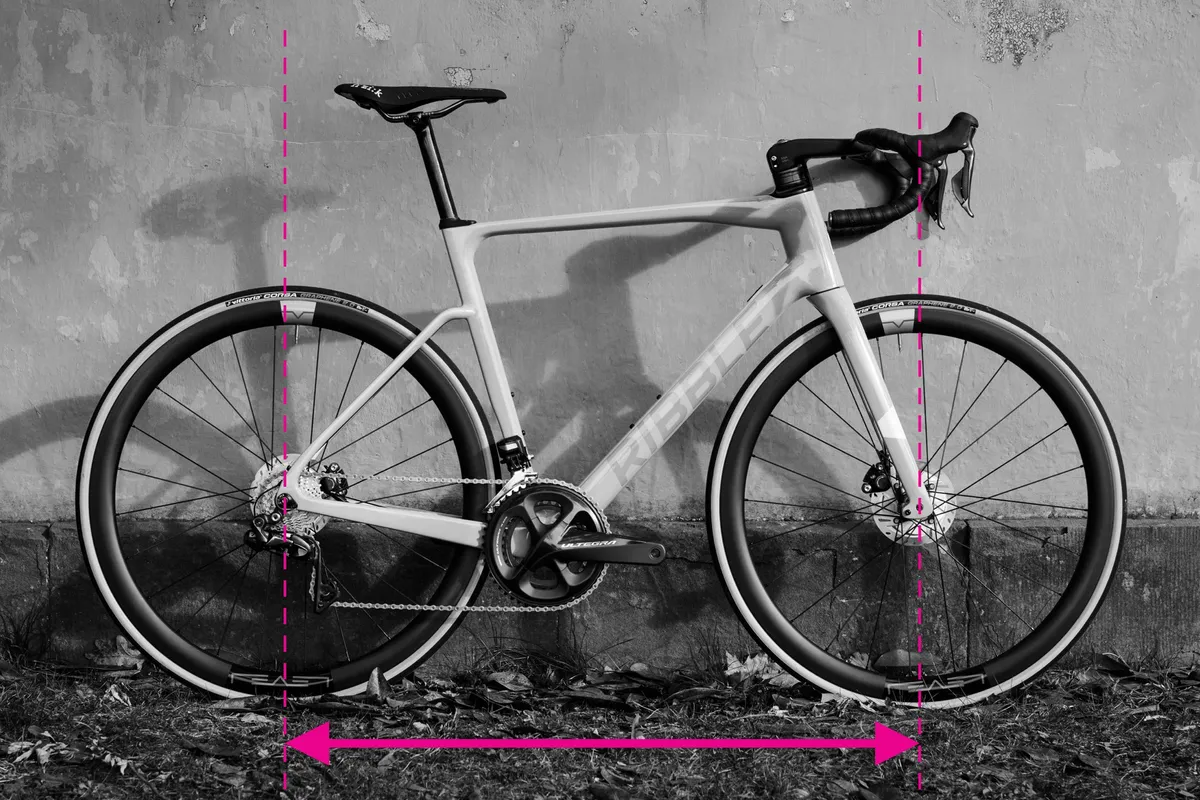Understanding Mountain Bike Geometry for Perfect Mountain Bike Frame Sizing
Selecting the correct mountain bike frame size is crucial for comfort, performance, and injury prevention. Several key geometric aspects of a mountain bike frame significantly influence the rider’s position and handling. Reach, for example, measures the horizontal distance from the bottom bracket to the center of the head tube. A longer reach positions the rider further from the handlebars, promoting stability at higher speeds. Stack, on the other hand, represents the vertical distance from the bottom bracket to the top of the head tube. A higher stack places the rider in a more upright position, increasing comfort but potentially reducing aerodynamic efficiency. Chainstay length, the distance between the bottom bracket and the rear axle, impacts responsiveness and wheelbase. Shorter chainstays provide agility, while longer ones enhance stability. Head tube angle affects steering. Steeper angles lead to quicker handling, whereas slacker angles offer greater stability on rough terrain. Finally, seat tube angle influences the rider’s pedaling position and power transfer. Understanding these measurements is fundamental to mountain bike frame sizing and choosing the right fit for your body and riding style. Consider these elements carefully when evaluating mountain bike frame sizing options. Visual aids, such as diagrams illustrating these measurements and their impact on rider position, can significantly enhance comprehension.
The relationship between these geometric aspects is complex and influences mountain bike frame sizing. For instance, a longer reach might necessitate a shorter stem to maintain a balanced riding position. Similarly, a steeper head tube angle often requires a shorter stem to prevent the handlebars from feeling too far away. Different riding styles require different geometry preferences. Cross-country riders often prefer a more efficient, compact geometry for quick acceleration and maneuverability. Conversely, downhill riders favor a more relaxed geometry for greater stability and control at higher speeds. Mountain bike frame sizing thus requires consideration of not only body measurements but also intended use and personal preference. Mastering these concepts is vital for optimal mountain bike frame sizing and achieving the perfect fit.
Accurate mountain bike frame sizing demands a holistic approach. Riders should not solely focus on a single measurement, but rather on the interaction of reach, stack, and other geometric elements. Manufacturers’ size charts provide guidance but can vary significantly. The same numerical size from different brands might result in vastly different riding experiences due to differing frame geometries. Therefore, comparing geometry charts directly is crucial in mountain bike frame sizing. A rider’s inseam might suggest a certain size according to one manufacturer’s chart, but comparing it against another brand’s geometry chart could lead to choosing a different frame size to achieve an optimal riding position. This illustrates the importance of understanding that mountain bike frame sizing is not solely dependent on a single metric but a combination of factors.
How to Measure Your Body for the Right Mountain Bike Frame
Accurately measuring your body is crucial for proper mountain bike frame sizing. Inseam, arm length, and torso length are key measurements. These dimensions help determine the ideal frame geometry for a comfortable and efficient riding position. Start by measuring your inseam. Stand with your back against a wall. Place a book between your legs. Measure the distance from the floor to the top of the book. This provides a good approximation of your inseam. Remember, this measurement is essential for determining standover height, ensuring sufficient clearance between the top tube and your crotch.
Next, measure your arm length. Extend your arm fully. Measure from your shoulder bone to your wrist. This measurement helps in determining the appropriate reach and handlebar position. For mountain bike frame sizing, a proper arm length measurement is vital for comfortable and safe riding. An incorrect measurement may lead to an uncomfortable hand positioning, especially during long rides. Accurate arm length helps ensure proper handlebar reach and prevents strain on the back and shoulders.
Finally, measure your torso length. Have someone assist you. Have them measure from your hip bone to the base of your neck. This helps determine the ideal stack height and seat tube angle for a comfortable riding posture. Torso length significantly influences the relationship between seat and handlebar position. Consider purchasing a flexible measuring tape for more accurate measurements. These measurements, when combined with the manufacturer’s mountain bike frame sizing charts, will help you select the most suitable frame size. Remember that slight variations in measurement can influence bike fit. Consulting with a bike shop professional can provide additional guidance and ensure the right mountain bike frame sizing for you. Proper mountain bike frame sizing enhances overall riding comfort and control.
Interpreting Mountain Bike Size Charts: A Guide to Mountain Bike Frame Sizing
Mountain bike frame sizing charts can be perplexing. Manufacturers use different measurement systems and terminology. Understanding these variations is crucial for accurate mountain bike frame sizing. One brand’s large might be another’s extra-large. Size charts typically present reach, stack, and standover height. Reach measures the horizontal distance from the bottom bracket to the head tube. Stack is the vertical distance from the bottom bracket to the top of the head tube. Standover height is the distance from the top tube to the ground. These measurements influence rider position and handling. Carefully compare these key figures across brands to find the best fit.
When reviewing mountain bike size charts, look beyond a single measurement. Consider the overall geometry. A longer reach might suit aggressive riders, while a shorter reach is better for those prioritizing maneuverability. Pay close attention to the stated intended use of the bike as many brands tailor their geometry to specific riding styles such as cross country, trail or enduro. Always refer to the manufacturer’s specific chart for the model you are considering, as even within a brand, geometry can vary between models. Mountain bike frame sizing isn’t a one-size-fits-all process. Different brands prioritize different aspects of geometry. Some might emphasize a longer reach for stability, while others favor a steeper seat tube angle for climbing efficiency. This influences how the bike feels when riding, so comparing these subtleties between manufacturers is important for achieving proper mountain bike frame sizing.
Manufacturers often provide additional information beyond the core measurements. Some may include recommended rider height or inseam ranges. However, these should be considered guidelines, not strict rules. Always prioritize the overall geometry and your personal preferences. Remember to consider your riding style and the terrain you’ll be tackling. Aggressively riding trails will demand different geometry than leisurely rides on paved paths. Proper mountain bike frame sizing involves careful consideration of several factors, including reach, stack, standover height, and personal preferences. By understanding the nuances of size charts and how different manufacturers approach mountain bike frame sizing, you can significantly improve your chances of finding the perfect fit.
Choosing Between Hardtail and Full-Suspension Frames for Optimal Mountain Bike Frame Sizing
Selecting the right mountain bike frame size significantly impacts the overall riding experience. Frame type—hardtail or full-suspension—plays a crucial role in this process. Hardtail mountain bikes, featuring a rigid rear triangle, offer a simpler design and generally feel more efficient for pedaling. Their sizing tends to be more straightforward, aligning closely with standard mountain bike frame sizing charts. However, full-suspension bikes, with both front and rear suspension, introduce additional complexities to mountain bike frame sizing.
The suspension system on a full-suspension mountain bike alters the bike’s geometry, particularly the effective reach. The rear suspension’s movement can change the wheelbase and bottom bracket height, impacting rider position and handling. This means that a size that feels comfortable on a hardtail might not feel the same on a full-suspension bike. Consequently, carefully considering a rider’s preferences and experience level with mountain bikes is critical for optimal mountain bike frame sizing. Manufacturers often provide specific size charts for each frame type, reflecting these geometrical differences. Therefore, consulting those charts is crucial during the decision-making process.
Understanding the nuances of suspension and its effect on geometry is essential for accurate mountain bike frame sizing. Resources dedicated to hardtail and full-suspension mountain bikes offer further insights into these complexities. Consider exploring these resources for a deeper dive into the technical aspects of mountain bike frame geometry and suspension systems if needed. Accurate mountain bike frame sizing hinges on understanding how both frame types influence the overall riding dynamics and rider fit.
Considering Your Riding Style and Terrain for Mountain Bike Frame Sizing
The ideal mountain bike frame sizing depends heavily on the rider’s intended use and preferred terrain. Cross-country riding, characterized by its focus on efficiency and speed, often favors a mountain bike frame sizing that prioritizes a more compact and responsive feel. A shorter reach and steeper head tube angle are generally preferred for quick acceleration and nimble handling on smoother trails. This setup allows for efficient pedaling and easier maneuvering through tight corners and technical sections. Selecting the correct mountain bike frame sizing for this riding style enhances the overall experience. Proper mountain bike frame sizing directly impacts performance and comfort.
Conversely, trail riding and aggressive riding styles often benefit from a longer reach and slacker head tube angle. This geometry provides increased stability at higher speeds and on more challenging terrain. The longer wheelbase enhances control and confidence when navigating rougher trails, drops, and jumps. A longer reach offers more room for movement, particularly beneficial when tackling technical descents. Finding the right mountain bike frame sizing for these disciplines significantly affects the rider’s ability to maintain control and handle obstacles. Mountain bike frame sizing is critical for safety and enjoyment.
Downhill riding, with its focus on speed and stability, necessitates a different approach to mountain bike frame sizing. Downhill bikes typically feature very long reaches and extremely slack head tube angles. This geometry prioritizes stability and control at high speeds, crucial when navigating steep, rugged terrain. The longer wheelbase and relaxed geometry significantly improve confidence and handling capabilities. Riders should prioritize a mountain bike frame sizing that offers ample room for maneuverability and inspires confidence on descents. The appropriate mountain bike frame sizing guarantees a safe and thrilling experience. Proper mountain bike frame sizing is paramount for various riding styles and terrain types.
Test Riding and Fine-Tuning Your Mountain Bike Frame Sizing
Before committing to a mountain bike frame size, test riding is crucial. Visit a local bike shop and test ride several bikes in different sizes. Pay close attention to how each size feels. A properly sized mountain bike frame allows for comfortable reach to the handlebars and pedals. Standover height, the clearance between the top tube and your crotch when standing over the bike, should feel safe and manageable. Overall comfort and control are key indicators of a good fit for mountain bike frame sizing. If a certain size feels awkward or unstable, it is likely not the right choice for your body and riding style. Remember, even the most comprehensive mountain bike frame sizing guide is only a starting point. Personal preferences vary greatly.
Once you identify a potential size, focus on fine-tuning the fit. Many aspects of mountain bike frame sizing can be adjusted. The stem length, the part connecting the handlebars to the fork, affects reach. A shorter stem brings the rider closer to the handlebars, while a longer stem increases distance. Seatpost height also plays a significant role. Adjusting the seatpost to the correct height ensures proper leg extension during pedaling. Proper mountain bike frame sizing is a delicate balance between comfort and efficiency. Fine-tuning these aspects improves control and reduces strain on your body. Professional bike fits can offer a customized setup, especially beneficial for serious riders.
Test riding allows you to experience the nuances of mountain bike frame sizing firsthand. Consider how easily you can maneuver the bike on different terrains. Assess whether you maintain control during climbs and descents. These factors highlight the relationship between mountain bike frame sizing and overall riding performance. Remember that a properly fitted mountain bike improves comfort, control, and safety. By meticulously assessing fit and making adjustments, you can optimize your riding experience. Choosing the correct mountain bike frame size enhances performance and enjoyment on the trail.
Common Sizing Mistakes and How to Avoid Them
Choosing the correct mountain bike frame sizing is crucial for comfort and performance. Many riders make the mistake of relying solely on inseam measurement. Inseam is a factor, but it’s not the only one. Ignoring other crucial measurements, like reach, stack, and torso length, can lead to an ill-fitting bike. A bike that’s too small will feel cramped and uncomfortable, potentially hindering performance and increasing the risk of injury. Conversely, a bike that’s too large will feel unstable and difficult to control. Proper mountain bike frame sizing considers the rider’s proportions and intended riding style. Accurate measurements and a thorough understanding of bike geometry are vital for a perfect fit.
Another common error in mountain bike frame sizing is failing to account for riding style and terrain. Aggressive trail riding demands a different geometry than leisurely cross-country adventures. A bike suitable for downhill riding might feel sluggish on a smooth, flat path. Similarly, a cross-country bike may feel inadequate on challenging, technical trails. Understanding the interplay between body measurements, riding style, and bike geometry is key to selecting the ideal mountain bike frame size. Consider the demands placed on the bike by your chosen terrain and riding style. This careful consideration will prevent sizing mistakes and ensure a safe, comfortable riding experience. Remember, mountain bike frame sizing is a multi-faceted process. Don’t hesitate to consult experts or visit a local bike shop for personalized assistance.
Finally, neglecting to test ride different sizes before committing to a purchase is a frequent oversight. Test riding allows for a direct experience of how the bike handles and feels. It provides invaluable feedback that complements measurements and size charts. Mountain bike frame sizing is not a purely mathematical calculation; it’s a personalized process tailored to individual needs and preferences. Test riding provides an opportunity to fine-tune the fit through adjustments like stem length and seatpost height. This ensures optimal comfort, control, and enjoyment. Avoid rushing the decision; take the time to thoroughly evaluate different mountain bike frame sizes through careful measurements and test rides for an ideal fit. By addressing these common mistakes, riders can find their perfect fit and elevate their mountain biking experience.
Specialized and Yeti Mountain Bike Frame Sizing Examples
Understanding mountain bike frame sizing is crucial for a comfortable and efficient riding experience. Two prominent manufacturers, Specialized and Yeti, offer insightful examples of how diverse sizing approaches can impact rider selection. Specialized’s mountain bike frame sizing often prioritizes reach, a measurement indicating the horizontal distance from the bottom bracket to the head tube. Their size charts emphasize reach as a primary factor, aligning it with rider height and torso length. This approach tends to create a more aggressive, forward-leaning riding posture, ideal for riders prioritizing performance and speed.
In contrast, Yeti’s mountain bike frame sizing may place slightly more emphasis on standover height, the vertical clearance between the top tube and the rider’s crotch when standing over the bike. While reach remains a key consideration, Yeti’s charts might cater more to riders who favor a slightly more upright riding position. This difference, seemingly subtle, can significantly alter the overall feel of the bike, influencing handling and comfort levels. A rider comfortable on a large Specialized might find a slightly smaller Yeti a better fit, reflecting the variance in design philosophies.
The differences between Specialized and Yeti mountain bike frame sizing highlight the importance of consulting individual manufacturer size charts and, ideally, test riding before committing to a purchase. Relying solely on generic size guides can lead to an ill-fitting bike, compromising both performance and enjoyment. Careful consideration of reach, stack, and standover height, coupled with an understanding of one’s riding style and terrain preferences, ensures a more informed decision in mountain bike frame sizing. Thorough research and hands-on experience are invaluable components for choosing the perfect mountain bike.




